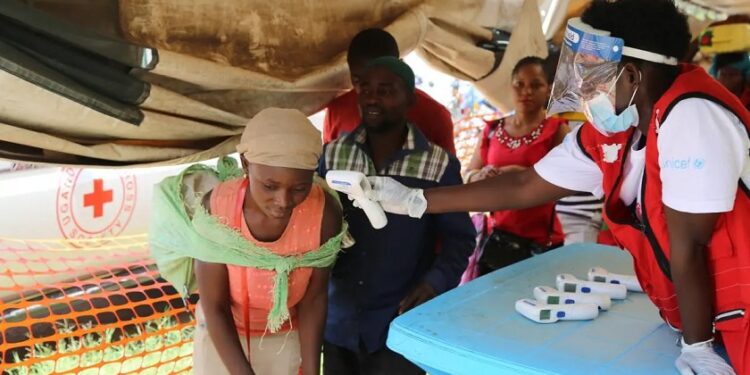Chances of surviving Ebola Virus Disease (EVD) are higher if a patient is promptly hospitalized, which is a reason for suspected cases to cooperate with health workers. Hospitalization also helps to stem community transmissions. Nonetheless, EVD case fatality rates are still higher than case fatality rates of other infections, even among hospitalized patients. The high Ebola case fatality rates probably dissuades some suspected cases from seeking hospital care and instead resort to shrines, especially when they hear that even health workers, who claim to be capable of managing it, are also dying from it. There is still room for improvement in clinical management of Ebola patients in hospitals, as shown by the four health workers who recently died from Ebola. We should not bury our heads in the sand with the delusion that hospitalization automatically enables one to survive Ebola illness; rather, we should close gaps in case management to reduce its mortality rate, thereby raising confidence in hospitals. There is no cure for EVD; health facilities render supportive treatments to prevent severe illness.
Emerging epidemics with no proven solutions call for collective thinking and innovations for better clinical outcomes. The last two occasions when I followed the presidential addresses on Ebola, I learnt a couple of factors that likely give rise to severe Ebola illness. High fever contributes to high losses of body fluids, which leads to low volume of blood circulation, and impairment of vital organs such as the liver and kidneys; thus, multiple organ failure. Additionally, diseases with high fever tend to constrain appetite, and cause vomiting and diarrhea; hence, body fluids are not replenished. Dr. Andrea Rivera and others reported in the Journal of Leukocyte Biology (2016) that Ebola illness is characterized by inflammatory mediators, which contribute to blood coagulation, tissue injuries, immune cell death, bleeding and multiple organ failure. Generally, severe cases of malaria, influenza, Ebola, Covid-19, Marburg, etc., are associated with excessive inflammation, but paracetamol drugs lack anti-inflammatory benefits.
Unlike paracetamol drugs, an extensive body of scientific studies cited in my review reports concluded that cold exposure and heat therapy (e.g. steaming) have anti-inflammatory benefits. Cold exposure reduces fever and inflammation while boosting appetite. Historically, doctors in the USA applied cold exposure and heat therapies to treat 1918 flu pandemic, thereby preventing severe illness and complications. Cold exposure was widely used by doctors in Europe to prevent severe illness from tuberculosis, in the 19th and 20th centuries, including Dr. George Bodington (1799–1882), who was initially vilified by the medical fraternity including the lancet but was later on proven to be right, Dr. John Coakley Lettsom (1744–1815), a fashionable Quaker physician who founded the Medical Society of London in 1773, and a German botanist, Hermann Brehmer (1826-1889). Several scientific studies of recent decades have confirmed underlying mechanisms by which cold exposure and heat therapy prevented severe illness and complications, including anti-inflammatory benefits, and boosting key immune cells called regulatory CD4+ T cells and other white blood cells.
Therefore, we should promote combined use of paracetamol drugs with cold exposure or heat therapy for better clinical outcomes to reduce high Ebola mortality rates. Promoting these affordable natural therapies is critical for our survival, since Africa was initially denied sales of Covid-19 vaccines in 2021, and thousands of Africans plus doctors died. Frontline health workers should adopt these supportive therapies in addition to paracetamol, to protect themselves against severe incidents of Ebola, Marburg, Covid-19, etc. since they have higher risks of contracting these infections.
I have 20 years’ experience of practicing cold exposure since I invented 24-hour domiciliary methods for it in 2002. I have applied cold exposure to quicken recovery from colds, typhoid fever, Covid-19, influenza, and malaria infections over the last 20 years. Timely cold exposure protects patients against severe malaria, by preventing high fever, headache, body aches, nausea, vomiting and loss of appetite, thereby quickening recovery from it. Timely cold exposure cuts durations of flu/colds by half, by preventing fever, headache, nasal discharge, blocked nose, body aches, cough, etc.
Ronald Eporu is a Health Education Scientist at Medificwise-smc Ltd
eporuronald@gmail.com
Do you have a story in your community or an opinion to share with us: Email us at editorial@watchdoguganda.com














